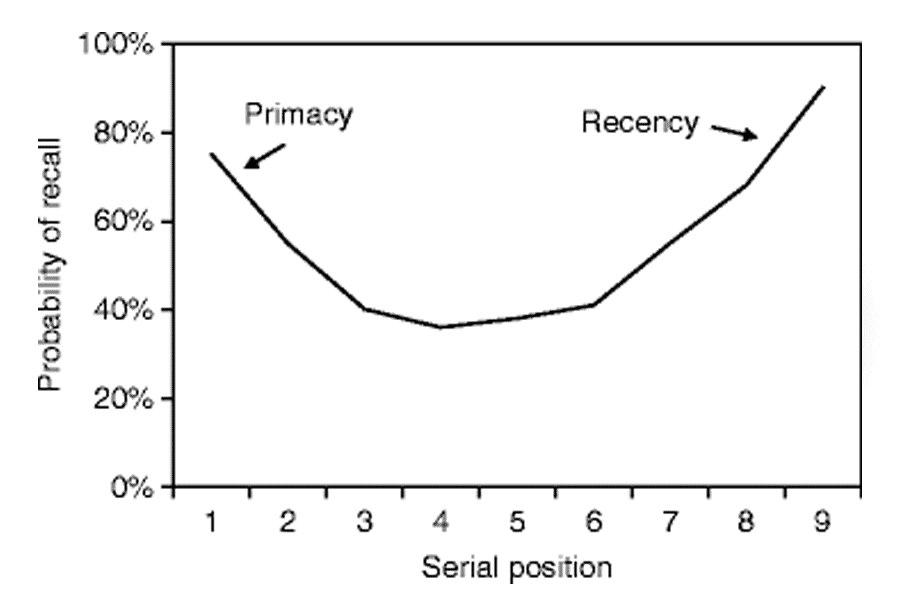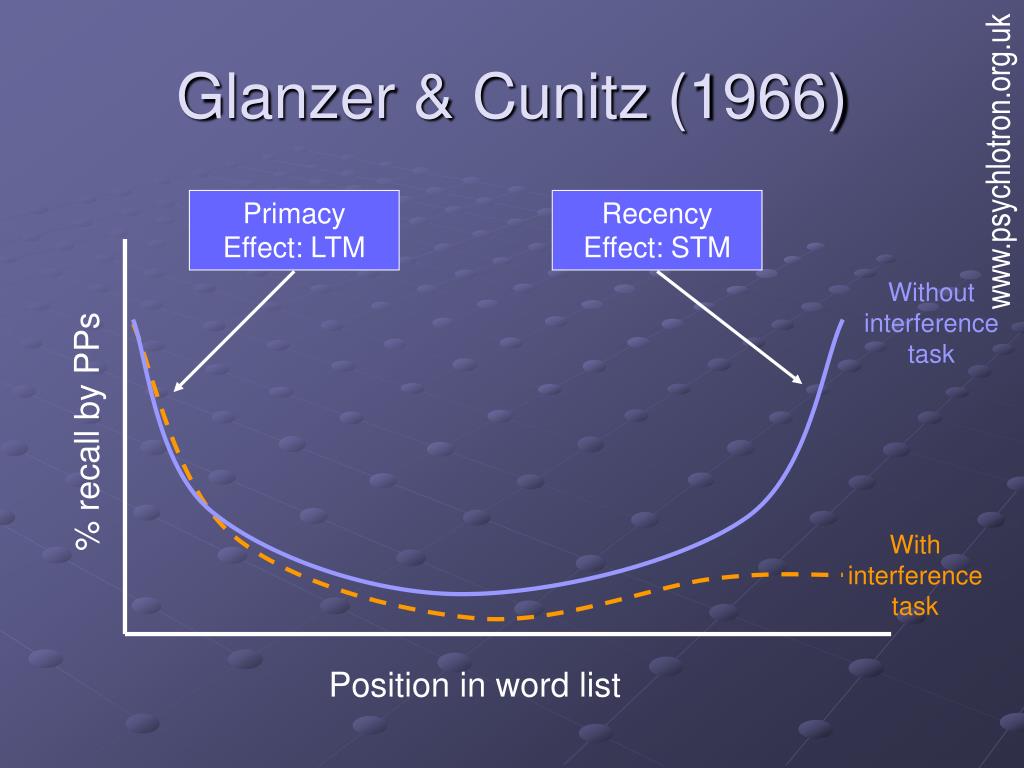


'Recency effect in anterograde amneisa: Evidence for distinct memory stores underlying enhanced retrieval of terminal items in immediate and delayed recall paradigms'. Journal of Verbal Learning and Verbal Behavior.
#Serial position effect free
'Controlled Rehearsal in Single-Trial Free Recall'.
#Serial position effect serial

On the other hand, if participants are in a situation where they have to continuously pay attention to information, a recency effect may occur. The primacy effect occurs because participants pay attention to the beginning information and ignore the information presented later. Steiner and Rain (1989) explain people pay more attention to information presented at the beginning, but progressively pay less attention to the information presented to them. Attention decrement hypothesis Information presented first has a greater influence on participants than information that is presented later, causing a primacy effect to occur, even if the information is consistent. In other words, discounting involves thinking of inconsistent information as having less value than information that is consistent with other information presented (Devine & Ostrom, 1985). Inconsistency discounting Participants would disregard information that was not consistent with previous items presented to them. Watkins and Peynicioglu (1984) explain this as participants changing the meaning of words, deviating from the established theme, to reduce the amount of deviation in the information presented. The participant modified the meaning of some of the words on the list to fit with the expectation he or she established. The specifics tested by Crano were: Change of meaning hypothesis The items on the beginning of a list establish a theme that the participants expect the rest of the list to fall into. recency, which were said to be unambiguous and opposed in their predictions. In 1977, William Crano decided to outline a study to further the previous conclusions on the nature of order effects, in particular those of primacy vs.


 0 kommentar(er)
0 kommentar(er)
